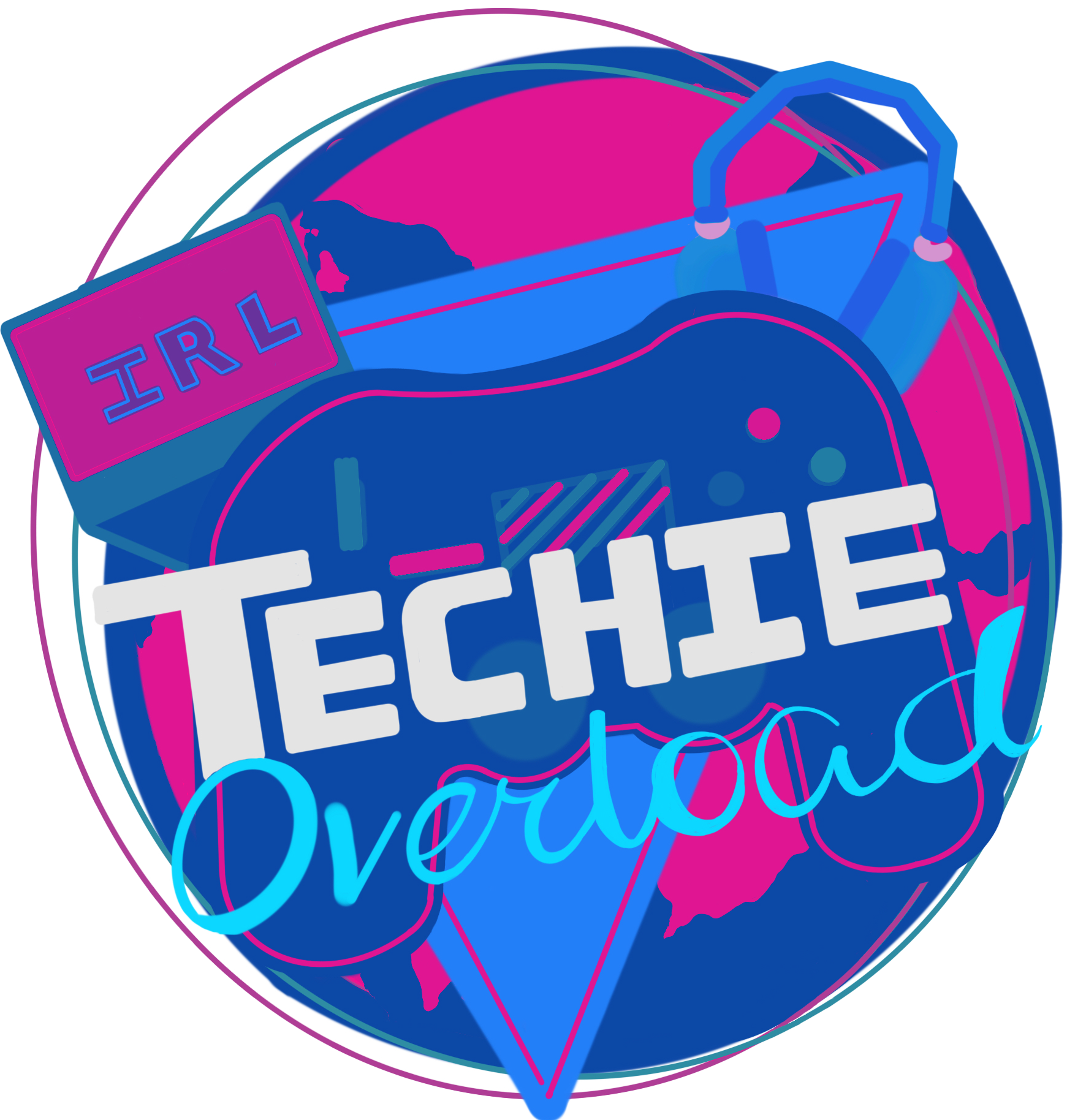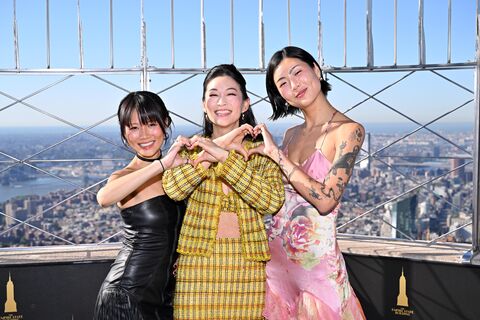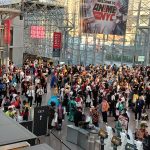There are weekends in New York that feel like the city itself bends under the weight of pop culture. Broadway openings, parades, celebrity sightings—NYC thrives on spectacle. But in August 2025, something different shimmered through the skyline: K-Pop Demon Hunters arrived, not just as a movie, but as an urban myth made real. Netflix’s surprise global phenomenon, the animated film that blended K-pop stardom with demon-slaying mythology, carved out its victory lap in the city that never sleeps, staging a two-day sing-along takeover that turned Manhattan into a glowing, golden carnival of fandom.
The heart of it all? A simple but brilliant concept—screenings where the subtitles weren’t just there to be read, but to be sung. Lyrics from the soundtrack—the same soundtrack that dominated Billboard and global streaming charts all summer—crawled across the theater screen karaoke-style. The audience wasn’t just there to watch Rumi, Mira, and their fellow Huntr/x warriors—they were meant to be them, their voices merging with the characters in real time. If you’ve ever seen a crowd of strangers erupt into harmonized singing, you know: it’s goosebump territory. Multiply that by hundreds of screaming fans per showing, and you start to understand why the event felt less like a movie screening and more like a ritual.
From Screen to Skyline
The moment that cemented the event’s magic, though, happened high above the streets. On August 23rd, the Empire State Building was lit gold, casting a radiant beacon across the city. It wasn’t just decorative lighting—it was a statement. Golden light poured into the night sky while cast members Arden Cho, May Hong, and Rei Ami stood at the viewing deck, waving to fans and cameras below. The gesture turned Manhattan into part of the show, the skyline itself into a kind of stage.
People who didn’t even attend the screenings stopped in Times Square, took photos, and asked, “What’s going on?” That’s the power of a cultural crossover. K-Pop Demon Hunters had gone from being a Netflix drop in June to Netflix’s most-watched film ever—236 million views and counting—but this was different. It wasn’t passive streaming; it was New York wearing the film like an accessory.
And speaking of Times Square, there was another unexpected delight: a sing-along bus. Picture it—dozens of fans packed into a rolling karaoke machine, neon lyrics bouncing across screens inside as the bus made its way past the bright marquees of Broadway. Pedestrians gawked, tourists recorded videos, and fans leaned out of windows waving banners and lightsticks. The city became their stage, every corner a verse waiting to be shouted.
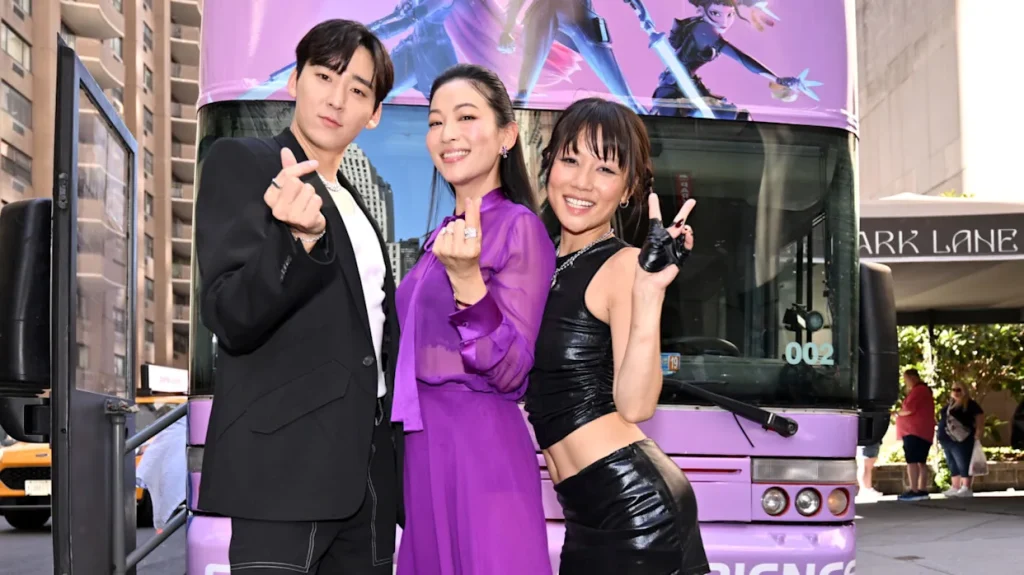
A Fandom Moment, Not Just a Movie
The numbers behind K-Pop Demon Hunters already told one story: a record-breaking Netflix launch, a chart-dominating soundtrack, and enough social media buzz to make even long-established franchises jealous. But in New York, the narrative shifted. This wasn’t just about clicks, streams, or views. It was about embodiment—living inside the music, bringing its mythology into the real world, and letting a piece of pop culture momentarily redefine the rhythm of the city.
And the best part? The creators showed up. Directors Maggie Kang and Chris Appelhans, producer Michelle Wong, and voice talents including Ken Jeong, Cho, Hong, and Rei Ami made surprise appearances. They slipped into theaters, greeted fans, and sometimes even joined in on the singing. That’s a level of fan service that leaves an impression—these weren’t celebrities hiding behind velvet ropes. They were laughing, shouting, singing, and making memories shoulder to shoulder with the people who gave the movie its rocket fuel success.
The Cultural Crossroads of New York
What made New York the perfect venue for this? Because NYC is itself a collision of cultures, a living mashup of identities and rhythms. K-Pop Demon Hunters thrives on exactly that energy—it fuses Korean pop music, fantasy demon lore, American animation traditions, and internet fandom culture into a bright, kinetic package. No other city could have mirrored that kaleidoscope so perfectly.
Standing in the middle of the sing-along, you could see the breadth of its appeal. Teenagers in idol-style outfits danced in the aisles. Middle-aged parents—some who admitted they’d only come along as chaperones—found themselves belting choruses by the second verse. International fans flew in, treating it like a pilgrimage. And scattered throughout the crowd were casual New Yorkers, people who just wanted to see what all the hype was about, and left clutching posters, shirts, and playlists saved on their phones.
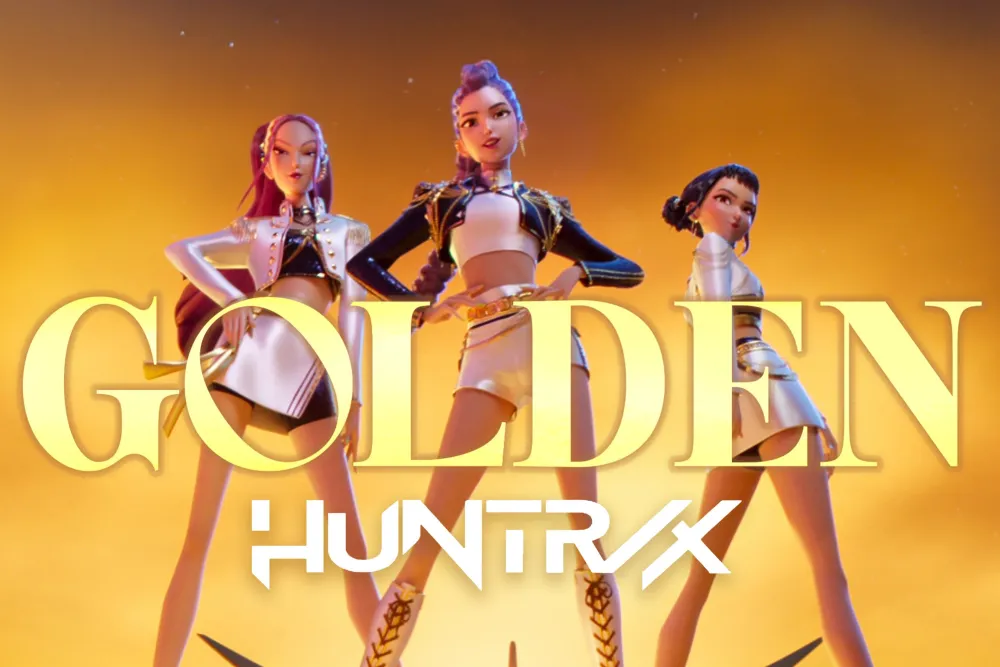
A Golden Promise of What’s Next
What New York witnessed wasn’t just a fandom celebration—it was a prototype. A proof of concept that says: this is what the future of global pop entertainment looks like. Audiences don’t just want to sit in the dark, watch quietly, and clap politely at the end. They want to participate. They want to scream, cry, laugh, and sing with strangers. They want to walk outside a theater and see their skyline transformed by the story they just experienced.
Rumors already swirl of a live-action adaptation, a stage musical, and sequels—Netflix and Sony know they’ve got lightning in a bottle. But maybe the biggest lesson came from that weekend in NYC: give the fans permission to be loud, to take over the city with their voices, and they’ll give you a memory that outshines even the brightest gold-lit skyline.
Because for two nights in August, New York didn’t belong to Broadway, Wall Street, or the Yankees. It belonged to demon hunters, to K-pop idols, and to every fan who found themselves singing at the top of their lungs with strangers who felt like family. And isn’t that, in its own way, exactly what magic is supposed to feel like?
